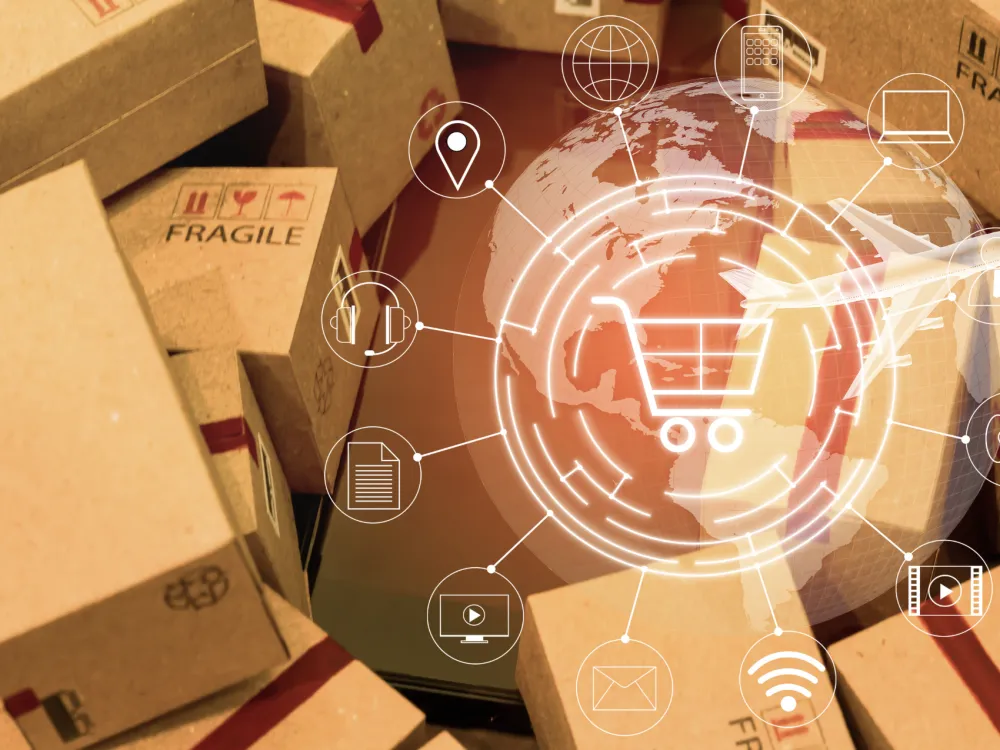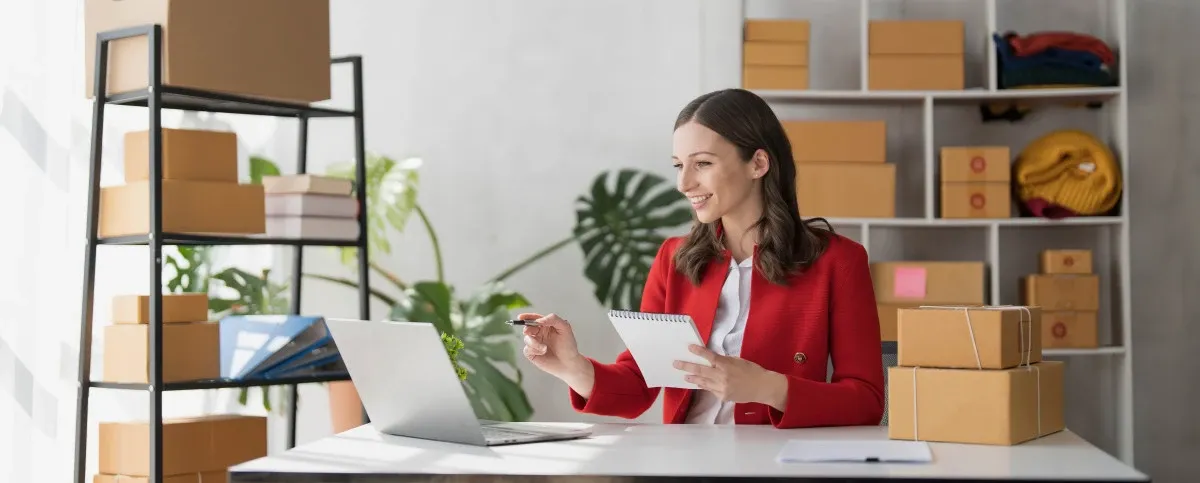
EU and International Shipping in E-Commerce: 10 Tips for Seamless Delivery
A rise in online shoppers and their ever-changing expectations are driving the booming industry of e-commerce. While marketing, accounting, and inventory management play crucial roles, product shipping has emerged as a key battleground for customer satisfaction and loyalty. A seamless delivery experience builds trust, encourages repeat purchases, and sets your online store apart in a competitive landscape.
10 Tips for Effortless EU and International Shipping
Navigating the complexities of EU and international shipping can be daunting, especially with diverse customs regulations and intricate logistics networks. But fret not, enterprising e-merchant! We've compiled 10 practical tips to optimise your product shipments and ensure your customers receive their purchases with a smile:
1. Master Inventory Management
Inventory management stands as the backbone of successful e-commerce operations. The impact of inaccurate stock information cannot be overstated. Not only does it disappoint customers when an item they want isn't available, but it also leads to lost sales and affects brand credibility. Implementing robust inventory management systems that provide real-time updates is crucial. Utilise inventory tracking software that integrates seamlessly with your e-commerce platform to ensure accurate stock levels. As an example, a print-on-demand shop can easily keep track of their customized hoodies stock. This not only reduces the risk of selling out-of-stock items but also enables better decision-making regarding restocking and helps prevent overstock situations.
2. Attention to Packaging
Packaging is an extension of your brand identity and a critical touchpoint in the customer's journey. Beyond protection during transit, it influences brand perception. Modern consumers often seek eco-friendly, aesthetically pleasing packaging. Conduct market research to understand consumer preferences and align your packaging design accordingly. Tailored and visually appealing packaging can create an emotional connection with the customer, enhance the unboxing experience, and drive brand loyalty. Moreover, sustainable packaging initiatives resonate positively with environmentally conscious consumers, potentially attracting a new customer segment.

3. Understanding Labelling
Labels play a pivotal role in ensuring seamless shipping and delivery. Different countries have varying regulations and requirements for product labelling. Invest time in understanding the legalities and specifications for labels to avoid shipping delays or non-compliance issues. Moreover, certain e-commerce platforms and logistics providers might have specific label formats or guidelines. Adhering to these standards ensures smooth operations and minimises the risk of errors or rejections during shipping. Streamlining labelling processes not only improves efficiency but also enhances the professional image of your brand.
4. Customised Packaging for an Enhanced Experience
Customised packaging offers a unique opportunity to engage customers and create memorable experiences. Beyond protecting the product, it contributes to brand storytelling and customer delight. Consider incorporating personalisation elements in your packaging, such as personalised messages, unique designs, or even tailored add-ons. These small touches can leave a lasting impression, fostering a sense of value and appreciation in customers. By understanding your target audience and their preferences, you can tailor packaging experiences that resonate with them, leading to increased brand loyalty and positive word-of-mouth.
5. Choosing Reliable Suppliers
The relationship with your suppliers, especially logistics partners, can significantly impact the efficiency of your shipping process. Working with reliable suppliers who offer diverse delivery options tailored to your customers' needs is paramount. Understanding your customers' expectations and having multiple shipping solutions available allow for flexibility and customer choice. Consider leveraging technology solutions that automate supplier selection based on shipping needs and preferences. Building strong relationships with suppliers fosters reliability, transparency, and operational efficiency, ensuring a seamless shipping experience for your customers.
6. Package Insurance for Security
In the ever-expanding e-commerce landscape, package losses or damages are inevitable. Securing package insurance mitigates the risks associated with unforeseen circumstances during transit. Particularly in times of heightened shipping volumes, like during peak seasons or amid global disruptions, insuring packages becomes paramount. Beyond safeguarding against financial losses, insurance also bolsters customer trust. It ensures that even if a package is lost or damaged, the customer experience remains positive, as resolutions can be swiftly initiated. Investing in insurance not only protects your bottom line but also safeguards your reputation by demonstrating a commitment to customer satisfaction and security.
7. Understanding International Shipping Costs
Expanding your reach globally opens doors to diverse markets, but it also introduces complexities, especially concerning shipping costs. Unanticipated customs fees or international shipping expenses can deter potential buyers. To circumvent cart abandonment due to unexpected costs, a comprehensive understanding of international shipping fees is crucial. Incorporate these expenses into the final product price or offer transparent breakdowns of additional costs during the checkout process. Moreover, understanding specific market regulations and tariffs helps you accurately price your products for international customers. This proactive approach not only prevents unpleasant surprises for buyers but also establishes trust and transparency, which are crucial for a positive customer experience.
8. Streamlining Carrier Processes
With a plethora of logistics solutions available, optimising the retrieval of packages from carriers can significantly impact efficiency. Simplify processes by utilising carrier pickup services or drop-off points strategically located for convenience. Integration with centralised systems or platforms can streamline these processes, reducing time-consuming manual efforts. Assess the volume of packages and choose carrier services that align with your shipping needs. Additionally, leveraging technology solutions that automate carrier selection based on predefined criteria simplifies logistics and minimises operational complexities. Streamlining carrier processes not only enhances efficiency but also ensures timely and reliable deliveries, contributing to a positive customer experience.

9. Communication is Key
Maintaining transparent communication with customers throughout the shipping process is fundamental. Providing tracking information and timely updates on their parcel's journey fosters trust and confidence. Implement automated systems for transactional emails or notifications to keep customers informed at every step. Offering proactive communication about potential delays or issues demonstrates reliability and care for the customer's experience. Moreover, soliciting feedback post-delivery allows for continuous improvement in shipping processes. Effective communication not only builds rapport but also encourages repeat purchases and fosters brand loyalty by prioritising customer satisfaction.
10. Catering to Buyer Preferences
Recognising and accommodating diverse buyer preferences in delivery options is pivotal for customer satisfaction. Offering flexibility in delivery locations, such as home delivery or pickup points, caters to varying needs. Conduct market research or analyse consumer behaviour to understand regional delivery preferences. Customising shipping options based on these insights ensures a customer-centric approach.
Additionally, providing multiple shipping speeds or express delivery choices caters to customers seeking urgency or convenience. By aligning delivery options with customer preferences, you enhance the overall shopping experience, fostering customer loyalty and encouraging repeat purchases. Flexibility in catering to buyer preferences solidifies your brand as customer-centric and adaptable to varying needs.
Final Thoughts
By implementing these tips, you can transform your EU and international shipping from a logistical headache to a customer-centric advantage. Remember, a seamless delivery experience fosters trust, loyalty, and repeat business, propelling your e-commerce journey to new heights. So optimise your shipping strategy, delight your customers, and watch your online business flourish.


